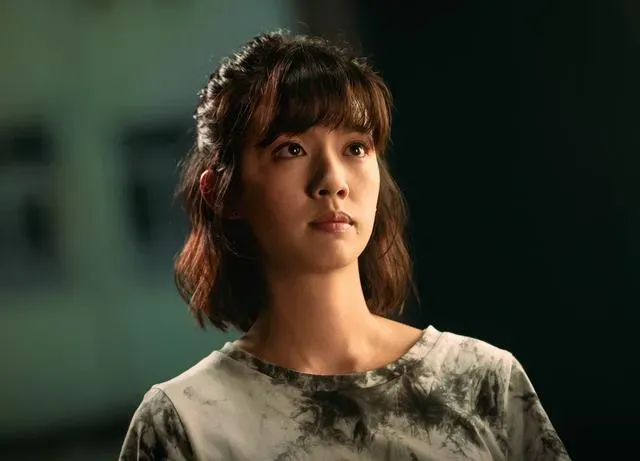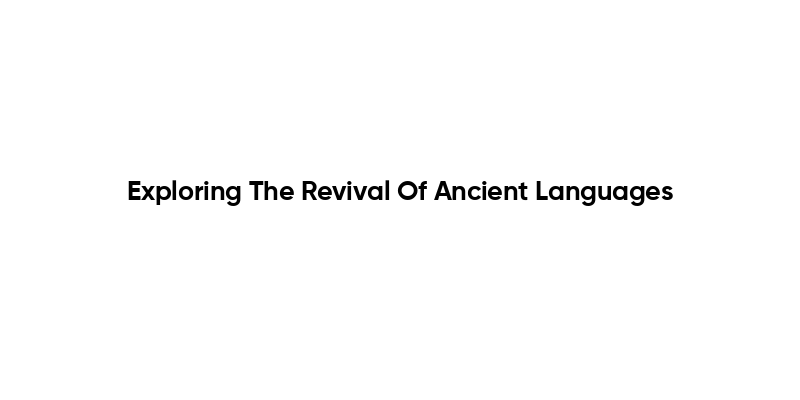Unpleasant female protagonists frequently challenge readers’ comfort zones, stirring debate about the nature of character development and literary merit. In his insightful analysis, Rumaan Alam explores how these unlikeable characters provoke profound reactions and can enrich narratives in a way that more conventional characters often cannot. Female authors, in particular, have begun to embrace this complexity, crafting narratives that feature multifaceted women who don’t fit the traditional mold of likability. Alam argues that the portrayal of such characters reveals the intricacies of humanity and reflects societal expectations placed on women. By diving into the depths of these characters’ flaws, we discover a unique literary landscape that elevates discourse surrounding gender, morality, and the art of storytelling.
When discussing the phenomenon of unheroic or difficult female characters, the portrayal of these nonconformists provides a fertile ground for literary exploration. Terms like ‘problematic protagonists’ and ‘flawed female leads’ encapsulate the essence of these figures, who often evoke mixed feelings in readers. These characters, crafted by skilled female writers, challenge the stereotypes and expectations of femininity, pushing boundaries in their narratives. Through literary analysis, we can delve into the intricate development of such figures, revealing layers that ultimately enrich the story they inhabit. As we explore how these complex characters navigate their worlds, we gain insight into both their struggles and the societal norms that shape them.
The Fascination with Unpleasant Female Protagonists
In contemporary literature, it has become increasingly common to encounter unpleasant female protagonists, characters who defy traditional expectations and challenge our perceptions of femininity. Rumaan Alam highlights this growing trend and suggests that such characters serve as a reflection of societal discomfort with women who embody traits that are often categorized as disagreeable or unlikable. Authors like Anthony Trollope and Elizabeth Taylor showcase women who navigate complex social landscapes, often making morally questionable choices. These characters elicit a range of responses from readers, who may find themselves both repelled and intrigued by their actions.
This literary device can be traced back to various works across history, where female characters are crafted with depth and nuance. For instance, in “The Eustace Diamonds” by Trollope, Lizzie Eustace’s desperate attempts to claim what she believes is rightfully hers make her a captivating figure, despite—or perhaps because of—her moral ambiguity. Such portrayals evoke empathy and conflict among readers, prompting them to reflect on the nature of femininity and agency. By allowing female protagonists to be flawed and unpleasant, writers can explore deeper themes of identity, societal expectation, and moral complexity.
Unlikable Characters: A Breeding Ground for Complexity
Rumaan Alam’s insights into unlikeable characters reveal that these portrayals are not merely for shock value, but rather serve a crucial role in character development and the overall narrative structure. Authors such as John Steinbeck and Anita Brookner delve into the intricacies of their female protagonists, presenting them as multi-dimensional figures struggling within the constraints of their circumstances. Cathy Ames in “East of Eden” epitomizes this complexity; her unapologetic nature serves to challenge the moral compass of the readers while simultaneously evoking fascination. Through her erratic behavior, Steinbeck suggests that the perceived madness of women may stem from societal limitations, raising questions about gender roles in literature.
Furthermore, characters like Angel Deverell from Elizabeth Taylor’s “Angel” provide a critical commentary on artistic ambition and societal acceptance. While Angel achieves commercial success, her relentless pursuit of literary success ultimately reveals her flaws and deteriorating relationships. These narratives compel readers to engage in literary analysis, examining the motivations and consequences behind such characters’ actions. In this way, the depiction of unlikeable female protagonists not only enriches the text but also encourages deeper discussions about societal norms and the boundaries of morality.
The Role of Female Authors in Shaping Complex Characters
In examining the contributions of female authors to the discourse on unpleasant female protagonists, it becomes evident that their narratives often challenge conventional storytelling norms. Writers like Elizabeth Taylor and Anita Brookner offer perspectives that illuminate the complexities of women’s lives, often entwining personal ambitions with societal expectations. By articulating the struggles of their characters, these authors create spaces for dialogue around feminine rage, desire, and autonomy, effectively redefining what it means to be a woman in literature.
The narratives crafted by women often allow for a broader exploration of the female experience, often showing how societal constraints shape character development. For instance, Brookner’s characters, who are frequently portrayed in a critical light, embody a longing for male validation that resonates with many readers. Through their struggles, these authors invite audiences to consider the societal structures that dictate how women are perceived and how they navigate their world. Their work invites not only appreciation for the complexity of their characters but also a deeper understanding of the broader implications those narratives hold, highlighting the importance of female perspectives in literature.
Societal Reflections Through Unpleasant Characters
Unpleasant female protagonists can serve as a mirror reflecting the societal attitudes and expectations placed upon women. These characters often break the mold, exposing the vulnerabilities and contradictions inherent in the female experience. Authors like Rumaan Alam emphasize that readers’ resistance to such characters often stems from ingrained biases, which can result in dismissiveness that overlooks the valuable lessons embedded in their narratives. By embodying traits labeled as ‘unpleasant,’ these characters push boundaries and inspire important discussions about gender roles and the expectations society imposes on women.
The characterizations found in the works of writers such as John Steinbeck serve to illustrate this phenomenon, as seen with Cathy Ames, who is both empowered and destructive. The complexity of her character allows readers to grapple with uncomfortable truths about morality and femininity, making her an unforgettable figure in literature. By analyzing these narratives, it becomes clear that unpleasant characters are not merely devices meant to provoke; they are crucial for readers to confront their discomforts and reassess their definitions of womanhood and virtue.
The Impact of Unpleasant Protagonists on Literary Analysis
The emergence of unpleasant female protagonists in literature has significantly shaped the landscape of literary analysis. Readers and critics alike are prompted to reconsider preconceived notions about character likability and morality. This shift encourages a more nuanced exploration of character motivations and the societal influences that inform their decisions. The critical inquiries prompted by characters like Lizzie Eustace in “The Eustace Diamonds” push us to dissect the intricate layers of their personalities, ultimately making way for broader discussions about gender and power dynamics.
Moreover, this trend fosters an environment where literature can be viewed as a space for critical reflection on the human condition. Characters who embody flaws and undesirable traits provide fertile ground for discussions about the complexities of identity, particularly in relation to feminism and societal constraints. Through such literary analysis, we begin to appreciate the craft of authors like Anthony Trollope and Anita Brookner, who create characters that challenge norms and invite readers to engage meaningfully with their narratives.
Literary Exploration of Moral Ambiguities
The exploration of moral ambiguities in literature is accentuated by the presence of unpleasant female protagonists. Writers like Rumaan Alam argue that characters who operate in morally grey areas provide essential opportunities for readers to engage with the complex nature of right and wrong. In novels like “East of Eden,” Cathy Ames’s actions force readers to confront their own moral judgments and the societal frameworks that inform them. The intricacies of her character challenge us to reconcile our responses to her choices with the understanding that she operates within a world that often limits her agency.
This engagement with moral uncertainty cultivates a richer reading experience, as it invites readers to scrutinize their biases and assumptions. The nuanced portrayals of women in literature can deepen our appreciation for character development, as they aren’t merely defined by their likability, but rather by the vividness of their flaws and the authenticity of their experiences. As we delve into these narratives, we uncover the profound insights they offer into the human psyche and the societal factors that shape our understanding of morality.
Reshaping Gender Norms Through Narrative Complexity
As literature continues to evolve, unpleasant female protagonists are reshaping traditional gender norms, challenging dated notions of femininity and behavior. Authors like Elizabeth Taylor and Anita Brookner craft characters who defy archetypal representations of women, presenting them as complex individuals with desires and flaws that resonate with readers. By allowing their female characters to explore the darker aspects of their personalities, these authors provide a fresh take on femininity—one that embraces the full spectrum of human experience.
One significant impact of this narrative complexity is the way it encourages readers to broaden their understanding of gender roles. Rather than portraying women as mere reflections of societal ideals, authors delve into the messy realities of their existence, showcasing individuality and resistance. This critical examination reveals that women, much like men, possess the capacity for both virtue and vice. Ultimately, through the lens of unpleasant female protagonists, literature becomes a platform for challenging stereotypes and fostering a deeper appreciation for the complexities of gender identity.
Diversity in Female Representation within Literature
The diversity in female representation that arises from the inclusion of unpleasant protagonists reflects a more accurate portrayal of reality. Women are complex beings who navigate a myriad of societal expectations, and literature must reflect that. Additionally, the works of Rumaan Alam and his contemporaries highlight how different facets of femininity can coexist—combining vulnerability with brute resilience. Characters like Angel Deverell serve as testaments to the multifaceted nature of women, revealing the tensions that underpin their desires and aspirations.
Through varied portrayals, authors can initiate discussions on relevant themes such as power dynamics, personal ambition, and the constraints placed on women by societal structures. Each narrative showcases the richness of the female experience, that cannot be summed up by mere likability or traditional virtue. Rather than leading to a moralized view of women, these stories champion diversity and the complexity inherent in women’s lives, urging readers to embrace multi-dimensionality in character representation.
Revisiting Reader Discomfort with Unpleasantness
Readers’ discomfort with unpleasant female protagonists often reflects deep-seated societal biases, prompting critical self-reflection as they navigate these narratives. Rumaan Alam suggests that such uneasiness can stem from a cultural desire for women to conform to idealized roles, resulting in a rejection of characters who live outside these boundaries. By examining essential texts that feature morally ambiguous women, readers are invited to consider their own prejudices and the implications of labeling a character as ‘unpleasant.’
Moreover, this discomfort underscores an essential theme within contemporary literature—that of challenging the status quo. Writers are pushing back against traditional narrative arcs, complicating reader expectations and spurring debate. This calls for a critical approach, inviting readers to rethink their relationship with literature and the narratives that resonate with them. Ultimately, uncomfortable female protagonists not only enrich storytelling but also serve as catalysts for social discussions on gender roles, expectations, and the diverse realities that women face.
Frequently Asked Questions
What are the characteristics of unpleasant female protagonists in literature?
Unpleasant female protagonists often exhibit traits such as manipulation, selfishness, and moral ambiguity. Their unlikeable actions serve to highlight complex emotional and psychological landscapes that challenge traditional female stereotypes. Authors like Rumaan Alam champion these characters for their authenticity and depth, suggesting that such portrayals can enhance character development and provoke thoughtful literary analysis.
How do authors use unpleasant female characters to enhance storytelling?
Authors use unpleasant female characters to create tension and conflict within their narratives. By presenting characters who defy social norms and exhibit flawed behavior, writers like Rumaan Alam encourage readers to engage critically with themes of morality, identity, and societal expectations. This allows for a richer exploration of character development and the human experience.
Can unpleasant female protagonists reflect societal issues?
Yes, unpleasant female protagonists often serve as reflections of societal issues. By depicting flawed women in literature, authors like Rumaan Alam highlight the struggles women face within patriarchal systems, making their characterizations not only relatable but also emblematic of broader cultural critiques. This literary device can provoke discussions about gender roles and expectations.
Why do some readers resist novels featuring unlikeable female characters?
Some readers resist novels with unlikeable female characters due to their discomfort with unconventional portrayals of femininity. Often, these characters challenge traditional expectations, which can lead to quick dismissal. However, as writer Rumaan Alam points out, these portrayals can be compelling and insightful, inviting readers to re-examine their biases and assumptions about female characters.
What role do female authors play in the development of unpleasant female protagonists?
Female authors play a crucial role in the development of unpleasant female protagonists by crafting multi-dimensional characters that defy typical portrayals. Writers like Elizabeth Taylor and Anita Brookner explore the complex inner lives and motivations of their characters, allowing for more nuanced narratives that go beyond mere unlikeability, facilitating meaningful character development and literary analysis.
How does Rumaan Alam view unpleasant female protagonists in literature?
Rumaan Alam views unpleasant female protagonists as essential to contemporary literature. He appreciates the skill involved in writing characters that evoke strong reactions, whether positive or negative. According to Alam, such characters add depth to narratives, prompting readers to reflect on their own perceptions of morality and femininity, ultimately enriching the literary landscape.
| Title | Author | Character Summary |
|---|---|---|
| The Eustace Diamonds | Anthony Trollope | Lizzie Eustace inherits a fortune but uses deception to claim a diamond necklace, acting in outrageous ways that reflect the absurd situations women face. |
| East of Eden | John Steinbeck | Cathy Ames, after giving birth, becomes a morally reprehensible figure, illustrating the dark potential of women’s madness due to societal constraints. |
| Angel | Elizabeth Taylor | Angelica is driven to become a successful author, which leads her to realize her sole identity is tied to being a writer, pointing out the harsh realities of artistic ambition. |
| Brief Lives | Anita Brookner | Fay and Julia, despite their dislike for one another, represent women trapped by societal expectations and their insatiable need for male approval. |
Summary
Unpleasant female protagonists have emerged as captivating figures in literature, challenging readers to confront their biases and the complexities of femininity. Through characters like Lizzie Eustace, Cathy Ames, Angel Deverell, and the duo Fay and Julia, authors like Rumaan Alam highlight how these women’s flaws can enrich narratives, escape traditional portrayals of womanhood, and ultimately compel us to reflect on our understanding of morality and identity. These unsettling yet fascinating portrayals not only enhance the depth of literary works but also stimulate discussions about what it means to be a woman in various contexts.



